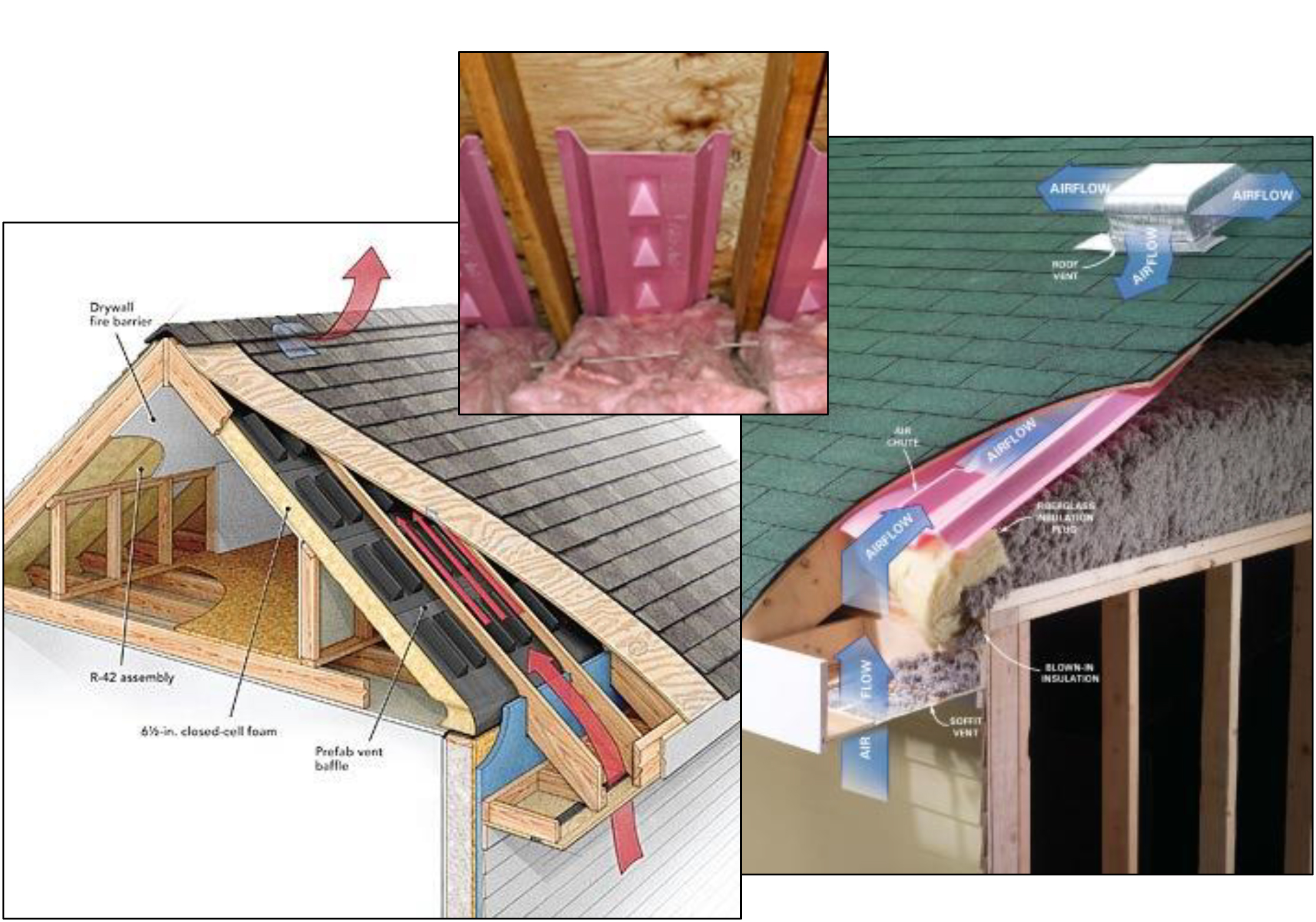Is Your Condo Breathing? Why Building Ventilation is Critical
A proper roof project includes a review of the capacity of the soffit and ridge vents based on the new codes; reducing penetrations through the internal vapor barrier; and increasing the attic floor insulation to meet today’s energy standards. This review may best be done by an engineer familiar with the appropriate building science and not by the low roofing bidder.
Seasonal Considerations
We all need to vent. No, I am not talking about Monday morning venting about the bum calls the referee made during the big game. I am talking about venting the attic space in your condominium. I know, most folks think venting is a summer issue, so why talk about it when the snow is on the ground? It is true that an attic only needs one tenth the ventilation in the winter than in the summer to control moisture buildup and temperature, but the winter time also has some unique issues.
First of all, if you or the condominium building committee wants to inspect attics, it is a lot easier on all concerned to be inspecting a cold attic than being in an attic on an August afternoon. Secondly, if repairs are needed, it is better to plan in the winter so that your bid documents are ready for the spring and summer construction season scheduling flurry. Finally, cold weather brings ice dams and heat loss due to poor insulation which are both directly related to ventilation problems.
Building Ventilation Best Practices
There are a lot of myths about what makes good ventilation in an attic. It is not true that rising hot air venting through ridge or gable vents is the best natural ventilation. This is sometimes called gravity ventilation. Tests have shown this chimney effect is negligible when compared to wind movement which has a much higher efficiency and allows for considerably smaller net venting area to be successful.

Soffit vents are probably the most important of all vents as they can act as both an inlet and outlet for air flow. That is why it is imperative they be kept free of debris or other material that could clog the vents. Without soffit venting the ridge or high gable vents would draw make-up air through the ceiling instead of from outside. For this reason the soffit vent should have at least 50 percent of the vent free area (NFA). This NFA rating is stamped on vent products. A rule of thumb is that the summer ventilation requirement can be estimated by determining the volume of attic space and dividing by 2 which will produce the needed cubic feet per minute (cfm) of ventilation.The difficulty with relying on wind movement is that areas of high and low pressure will change with wind direction thus existing buildings are dependent on the design of the building and its orientation for determining the type and location of vents. The best designs have the outlet as high as possible, such as a ridge vent, and the inlet as low as possible such as the soffit area. To improve this air flow, air chutes are often installed during initial construction or later retrofitted. These chutes are formed plastic channels that are attached to the roof joists and are butted up to the soffit vents to act as a pathway conduit for air coming through the soffit vents. They also serve as a barrier to prevent the attic insulation from clogging the soffit vents.
When selecting replacement vents always seek vents that will have low air flow resistance. They come in either perforated or slotted. The slotted has a reputation of resist clogging by airborne debris. Some ridge vents come with baffles which are designed to draw air out due to the suction developed.
As we discussed, venting needs in the winter are often different for the summer. Winter ventilation is needed to remove attic moisture arising from the living space. It has been found that a great deal of moisture from as low as wet basements and crawlspaces can travel through the house’s floor penetrations serving plumbing and electrical piping. This moist air can then cool its water vapor and condense onto roof sheathing. A well ventilated attic will produce a more uniform temperature across the roof sheathing and thus minimizes warm spots near the eaves that create ice dams from cyclical refreezing of snow or rain on the roof.
In summer, of course, the main problem from poor attic ventilation is heat. Ninety degree weather can create temperature of over 150 degrees in an attic. Heat kills. It can kill your air conditioning budget and reduce the lifespan of an asphalt shingle roof by one half its rated life. So if you start having cabin fever, make sure you vent.
Article written by Jack Carr, P.E., R.S., LEED-AP, Criterium Engineers
Published in Condo Media December 2019 edition
Download a PDF Version of this Condo Media Article


 Perhaps you are on the Building Committee which has been charged by the Board to recommend a replacement siding material for your 35 year old condo. Perhaps you are a property manager whose in-basket is filled with unit owner complaints about vinyl clapboard siding problems in the new condo complex. Whatever the vinyl façade issue is, the future solutions may surprise you.
Perhaps you are on the Building Committee which has been charged by the Board to recommend a replacement siding material for your 35 year old condo. Perhaps you are a property manager whose in-basket is filled with unit owner complaints about vinyl clapboard siding problems in the new condo complex. Whatever the vinyl façade issue is, the future solutions may surprise you.